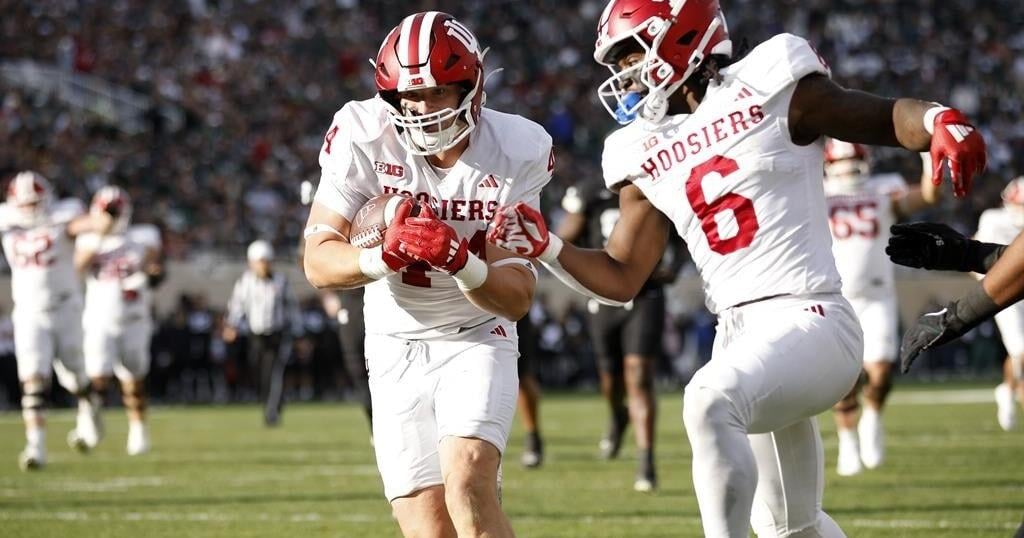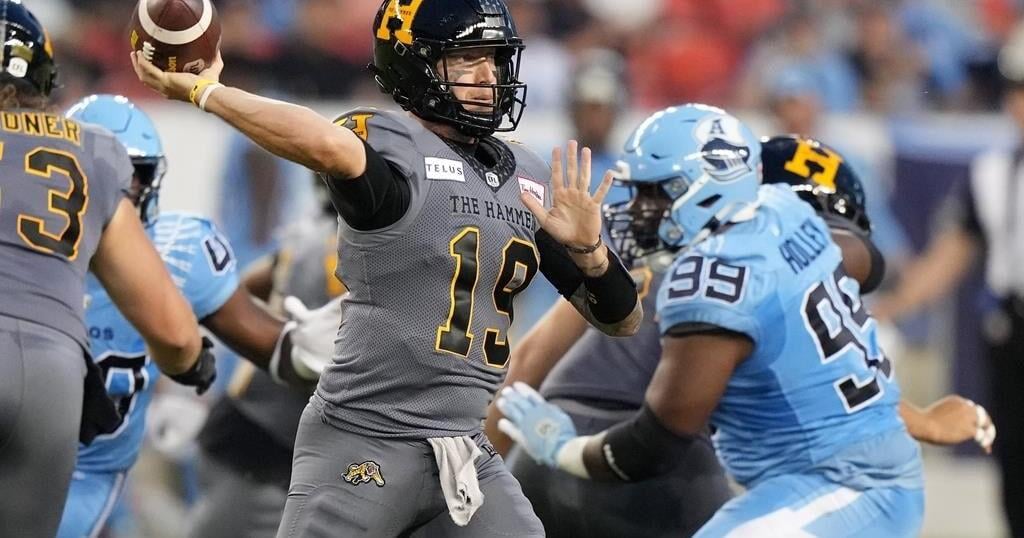Playing baseball during a pandemic will demand many things from MLB’s players, coaches and staff. First and foremost, the acceptance of untold risk to their health. Second, a strict adherence to the rules and regulations necessary to keep everyone as safe as possible. That’s before you even consider a three-week lead-up to a 60-game season — a hit-the-ground-running dash that will challenge everyone to be resourceful and creative, making the most of limited time while adhering to the precautions necessary to prevent further spread of a novel and unpredictable virus.
As training camps get underway this weekend ahead of an expected July 23 opening day, we’re finding out what that looks like. At stadiums across the league, pitchers are taking the mound with personal rosin bags and wet rags to be used for moisture in lieu of licking fingers. Hitters are greeting one another with elbow bumps or foot taps and stepping in for batting practice with masks over their faces. Clubhouse attendants are disinfecting baseballs at the end of every workout. Everyone’s trying their best not to spit.
Toronto Blue Jays players who have cleared MLB’s intake protocol and provided two negative COVID-19 tests are currently experiencing similar scenes in Dunedin, Fla., where group workouts have been taking place since Friday. Meanwhile, some Blue Jays still have to wait to participate, as testing turnaround takes time.
But provided the club can satisfy all of MLB’s protocols and the additional governmental measures they’ve agreed to undertake in order to hold camp north of the border, the Blue Jays plan to fly a private charter full of players and staff up to Toronto on Sunday night. And they hope to hold a group workout under open skies at Rogers Centre the next day — the stadium’s retractable roof itself factoring in as one of the many health considerations.
“More the mental health,” Blue Jays GM Ross Atkins said on a conference call with media Saturday afternoon. “I think just being in the open air and feeling the sun, certainly there’s huge benefit to that with the restrictions and guidelines that we’re going to be under for a few weeks. Getting the sun on our skin and having that opportunity to feel a different level of humidity and a different overall climate is definitely a huge positive for us and for our players.”
Yes, a little sun never hurt anyone — particularly not players and staff who will be rushing to prepare for a season unlike they’ve ever experienced under less-than ideal circumstances. Next week’s workouts at Rogers Centre will occur in waves, with staggered groups of players taking the field throughout the day. The hours will be extremely long for coaches and staff in particular, as players cycle in and out, each on their own individualized progression.
Some pitchers have only thrown an inning of live batting practice at this point, while others have built up to as many as four innings of simulated game work. Some hitters have seen live pitching over the last three months; others haven’t. It will take a concerted and creative effort in order to ensure each player gets the work and attention they need.
A big consideration will be physical space, which will be at a premium as everyone tries to remain as distanced as possible. Players will be assigned to one of four different locker rooms; pitchers will make use of all five mounds the ballpark holds; hitters will be split up between the on-field batting cage and the two smaller ones deep within the stadium’s guts. It’s possible you could have a pitcher throwing a side session on the game mound, while baserunners practice their leads behind him, and outfielders run routes behind that.
“It’s about using every ounce of your facility and as much of your day as you can possibly use without taxing staff too much,” Atkins said. “Spreading things out more. Having less people in confined and restricted areas for less time. When we do have a larger number of people there, having it be for very short periods of time. Thinking about that as its happening across the entire day as opposed to a traditional workout that could be started and finished within three to four hours.”
The Blue Jays are working on ways to create heightened levels of competition throughout camp in order to re-introduce players to the physical and mental stresses of baseball at the highest level. Although club President Mark Shapiro indicated recently that the Blue Jays weren’t planning to play any pre-season games against other teams, the organization is still working on the possibility of an exhibition set south of the border in the days leading up to their opener, which is expected to be in St. Petersburg, Fla. against the Tampa Bay Rays. But until the Blue Jays find a dance partner, they’ll have to rely on live batting practice, simulated games and intrasquad scrimmages to expose players to game-like scenarios.
And those activities will have to continue into the season, as the players who don’t crack Toronto’s 30-man opening day roster continue working at the club’s “alternative training site.” The Blue Jays are planning to run that satellite camp out of Sahlen Field in Buffalo, NY, provided they can finalize an arrangement with the federal government to allow players to cross the border smoothly if they’re called up to Toronto.
And it’s not hard to envision scenarios in which the Blue Jays will be dipping into that pool. Say, for example, on day one of a six-game road trip Toronto’s starting pitcher is injured in the second inning and leaves the game. A succession of relievers pick up the pieces, but the next night Toronto’s starter gets shelled and can only record five outs, forcing the bullpen to carry a heavy load again. Many of Toronto’s relievers are now running on fumes with a get-away day game starting in only 14 hours, followed by the final three games of the road trip in a different city.
Situations like this arise all the time over the course of a 162-game season, as injuries, over-use and poor performance lead to perpetual roster churn. Remember, 30 pitchers threw at least 10 innings for the Blue Jays last season. Had you forgotten about Javy Guerra, Zack Godley, Nick Kingham and Buddy Boshers?
But it stands to reason that the burn rate will be greater in this strange season. Opening day is less than three weeks away and the Blue Jays are only now beginning training camp. Arms will be stressed as pitchers race to prepare for the season, testing the durability of their shoulders, elbows and forearms. Not everyone’s body will endure the demands.
And when that season starts, the intensity and magnitude of each game will be elevated as team’s try to shoot out of the blocks in a 60-game sprint to the playoffs. Pitchers will be trying to execute with as much conviction as possible; hitters will be more dialled in to every plate appearance; managers will have a quicker trigger as they try to never let their team fall too far out of a game. Not everyone’s performance will meet the challenge.
All things considered, it won’t be a surprise to see the Blue Jays calling upon reinforcements from the alternate training site early and often. And it will be imperative that those players are physically and mentally prepared to step into a major-league environment and help the team win. The challenge for Blue Jays staff is finding a way to keep those individuals as engaged as possible.
A monotonous, spring training-esque routine of lifting at 8 a.m., throwing or hitting at 9 a.m., fielding at 10 a.m., and rehab at 11 a.m. before spending the rest of the day in meetings or confined to a hotel room will grow tedious and tiresome awfully fast. The Blue Jays will need to program schedules to be varied and challenging, providing players with fresh stimulus and motivation to show up at the ballpark every day with a purpose.
There will also be a group of young, further-away prospects — Jordan Groshans, Alek Manoah, Simeon Woods Richardson, Alejandro Kirk — working out next to major-league depth at the alternate training site that the club’s hoping to concurrently expose to unique developmental opportunities.
“We have an incredibly creative player development staff — many of those members will be with us in Buffalo. And we’ve already started to talk about what that could look like,” Atkins said. “There’s a lot of creativity that has occurred and a lot of collaboration with our performance staff to make sure we’re tapping into sports science and tapping into opportunities to prioritize goals that we have for individuals. And we’ll look to create competition in every possible way.”
Maybe, for starting pitchers like Manoah and Woods Richardson, the club designs something close to a start week routine — with a side session, scouting reports to study and a catcher’s meeting leading up to a sim game against the hitters they spent the week game-planning for.
Meanwhile, hitters could prepare for their sim game plate appearances against those starters by studying video, looking to pick up cues in deliveries and thinking about how they might be attacked. Relievers could keep bullpens fresh with competitions that award points for locating certain pitches in certain quadrants of the zone, like this one designed by Cincinnati Reds pitching coordinator Eric Jagers:
Still, a challenge for Blue Jays coaches in Buffalo will be navigating the turnover of players coming and going — either because they’ve been called up, injured or chosen to accompany the major-league club on a road trip, as teams will be permitted to carry a taxi squad of up to three players for away games.
Those taxi squad players will train with the club and remain on standby in case of any last-minute injuries or coronavirus-related absences. They won’t receive MLB pay or service time but will receive the Major League allowance of $108.50 per day. If a team carries a full taxi squad, one of the three players must be a catcher — and that catcher can remain with the club during home games in order to catch bullpens.
Six-year veteran Caleb Joseph, signed to a minor-league deal over the winter, is an obvious candidate to be that catcher. Santiago Espinal and Ruben Tejada also stand out as potential taxi squad fits, considering their ability to cover a variety of positions around the diamond. A reliever with the ability to pitch multiple innings — think Jacob Waguespack or Thomas Pannone — would make sense as well.
It all adds up to a lot of moving pieces as the Blue Jays try to make the most of this strange, shortened season. There is much to accomplish, but not much time or space with which to accomplish it. But such are the realities of playing baseball during a pandemic. And as they let the sun in to the Rogers Centre this week, the Blue Jays are hoping it’ll not only bring a little light to their training camp, but some resourcefulness and creativity, too.
“We’ve already talked a lot about how we can create the best development opportunities while having guys primed to help our major league team,” Atkins said. “Putting guys in positions to continue to think about baseball in a different way. And think about their development in a different way. Albeit sometimes not in a team environment or in a competitive environment — but there are still going to be opportunities for us to learn and grow.”
Source: – Sportsnet.ca
Source link
Related

























